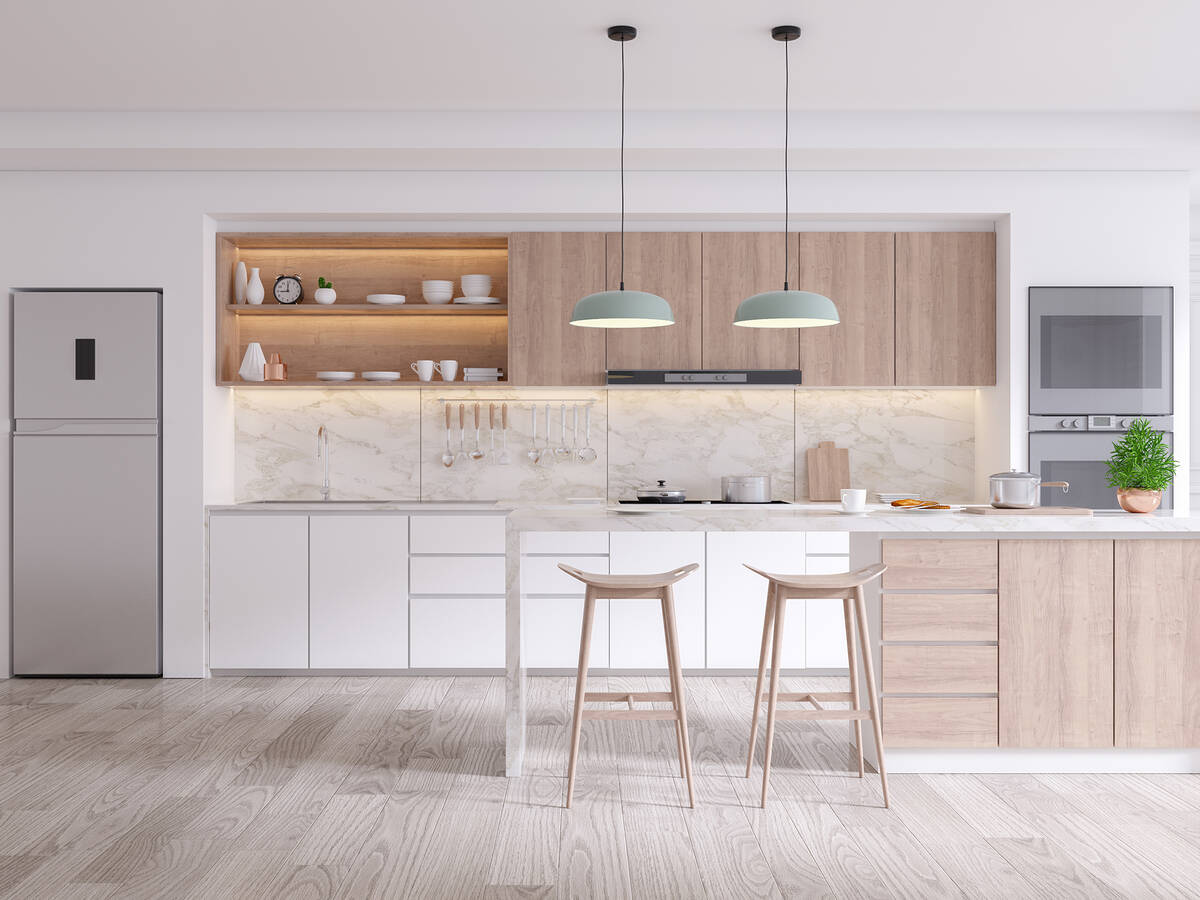Pure minimalism by doing without
Handle-free kitchen for practical, no-frills functionality
The absence of handles has a huge impact on appearance: This minimalist design perfectly accentuates the fronts. At the same time, it has many practical advantages. Find out which aspects make it worthwhile here.

Trend towards puristic beauty

Kitchens without handles have gaining popularity for years. The reasons for this are many and varied, ranging from a sense of style to practical advantages.
Good reasons to do away with knobs, hangers, and co.:
- Harmonious overall impression
- Freedom of movement
- Easy care
Harmonious overall impression
Classic white is still the most popular color for fronts. It’s easy to combine with other colors, and any dirt or impurities immediately stands out, making care and maintenance easier. But the trend also includes dark shades and combinations with premium materials.
In any case, doing without is a good option because it provides an unobstructed view of the fronts. At the same time, it conveys a sense of calm and order, especially important in combined living and kitchen areas.
Premium glass, lacquer, or stainless steel come into their own much more effectively. Wooden fronts can fully develop their warm radiance without the interference of superfluous flourishes. Concrete or natural stone are much more captivating with their natural patterns.
At the same time, the handle-free design signals a certain opulence: Not using handles requires modern technology. This, of course, has its price.
Freedom of movement
Are you or your loved ones the type of people who often bump into one other? Knob-free cabinets will protect you from injuries. For families with small children, this freedom of movement makes life much easier and a source of danger eliminated. This promotes relaxed cooking with the whole family.
Easy care
A continuous surface is much easier to keep clean than a surface with multiple elements. In the kitchen, organic substances can settle in corners, creating the perfect breeding ground for biofilm. This affects hygiene, even if the space is immaculately maintained.
Disadvantages to doing without
Like everything in life, a kitchen without handles has its drawbacks. To open the doors, you need to press certain points on the surfaces. These points will quickly get dirty, so they need to be cleaned often. In addition, cabinets may accidentally open when you touch them.
The different operating concepts
Choosing a handle-free kitchen means choosing an operating concept. Three different systems are available to choose from when it comes to eliminating the need for knobs or brackets.
1. Handle strips and recesses
Strips are usually made of aluminum and can be attached to the top, bottom, or side edge. They protrude slightly above the kitchen front, creating a space you can grab. In principle, these are discreet models that are hardly visible.
Recesses, on the other hand, are milled into the body. The recesses can be covered with metal shells. However, these recesses can also have the same surface as the front.
2. Push-to-open mechanism
This mechanism requires sophisticated technology. Closing a door tensions a spring. A sufficiently strong magnet in the hinge ensures that it remains closed. Pushing against the closed door releases the spring. A pin integrated into the hinge now gently pushes it open. This system is purely mechanical. For drawers, the mechanism can be installed directly in the rails.
3. Serv-on with sensor
The Serv-on mechanism works with electronic sensors and a small electric motor that moves the hinge. A sensor registers light touch on a certain area on the front. It then activates a motor that can open cabinet doors and drawers automatically.
Can’t decide on a solution? A combination of different methods could be an option: for example, recesses for wall cabinets, push-to-open for base cabinets, and Serv-on for the doors you open most often.
Frequently asked questions about handle-free kitchens
The materials of the fronts come into their own without knobs or bows. At the same time, it creates a sense of calm and order.
It’s impossible to bump into smooth fronts. This is especially important with small children.
Organic materials can attach to them, promoting an unsanitary biofilm.
They are technically easy to implement and don’t require additional technology.
Push-to-open works mechanically with magnets and springs. With Serv-on, an electronic sensor triggers an electric motor.
Handle-free kitchen for the perfect look and ease of use
Doing without perfectly sets the scene for the kitchen fronts. This allows wood, concrete, or natural stone to fully develop their charisma, and the combinations of different colors come into their own without distracting flourishes. It also enhances ease of use. Three different systems are available for designing a kitchen without handles: strips, push-to-open, and Serv-on.Ideas for your dream
Want to get regular updates about current trends? Take a look at our hansgrohe kitchen brochure!
Trusted partners